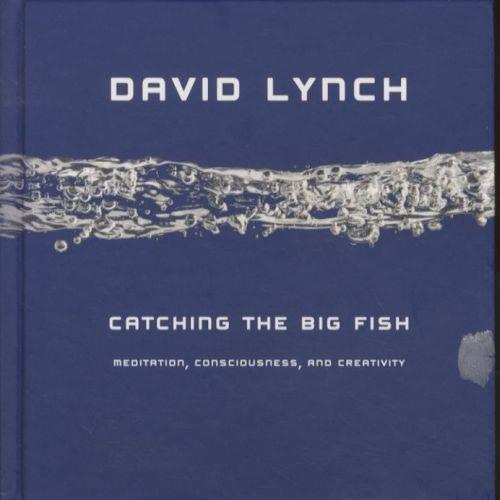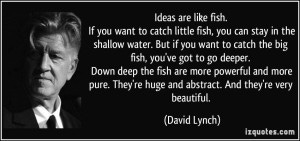Title: Catching the Big Fish: Meditation, Consciousness, and Creativity
Author: David Lynch
Publisher: TarcherPerigee
Publication Date: 2007
Where to purchase: Amazon (affiliate link)
Welcome to Vintage Cafe, a reader-supported newsletter exploring music, film, books, art, travel, and coffee. This January, enjoy a 20% discount on yearly subscriptions! Sign up now to unlock in-depth reviews, exclusive interviews, travel stories, and more—delivered straight to your inbox.
David Lynch, the brilliant filmmaker and creative force behind Blue Velvet, Eraserhead, and the iconic series Twin Peaks, passed away today, leaving a profound legacy that has shaped the worlds of cinema and art. Known for his unique ability to blend the surreal with the everyday, Lynch created stories that challenged, mesmerized, and stayed with us long after the credits rolled. But beyond his work as a director, Lynch was a thinker, a seeker, and a deeply curious soul who believed in the transformative power of creativity and meditation. His book, Catching the Big Fish: Meditation, Consciousness, and Creativity, offers an intimate look into his mind, inviting readers to explore the same depths that inspired his remarkable body of work.
Catching the Big Fish is a deceptively simple book, written in Lynch’s unmistakable voice: direct, unpretentious, and deeply reflective. It is a slim volume, but its brevity is intentional, echoing his belief that big ideas often come in small fragments. The book’s title itself is a metaphor for the creative process. Lynch likens ideas to fish: small ones dart near the surface, but the big ones—those that can inspire groundbreaking art—require us to dive deep into the waters of consciousness. To Lynch, creativity isn’t a flash of luck or a random spark; it’s the result of cultivating an inner stillness that allows the best ideas to emerge.
The practice of Transcendental Meditation (TM) is central to Lynch’s philosophy. He credits meditation, which he began in the 1970s, with transforming not only his creativity but also his life. Lynch describes how TM allows him to access “an ocean of pure consciousness,” a space of infinite calm and clarity where the “big fish” of creativity reside. Unlike traditional self-help approaches, Lynch’s reflections on meditation are refreshingly free of jargon or evangelism. Instead, he shares his personal experience: how meditation helped him shed the anger and frustration that once weighed him down, likening those emotions to a “Suffocating Rubber Clown Suit” that he could finally remove. This honesty, paired with his straightforward prose, makes his insights feel accessible and genuine, even for those unfamiliar with meditation.
The book is not a conventional memoir, though it offers glimpses into Lynch’s life and career. Instead, it is a collection of meditations on creativity, each chapter presenting a nugget of insight. He shares anecdotes about the making of his films, revealing how certain ideas evolved from seemingly random images or moments. For example, Lynch explains how the iconic opening sequence of Blue Velvet—a picket fence and a lawn interrupted by a severed ear in the grass—was born from a single, vivid image that lingered in his mind. These fragments, he explains, are often the seeds of larger works, and nurturing them with patience and attention is key to creative success.
Lynch’s exploration of creativity goes beyond filmmaking. He touches on sound design, storytelling, and the emotional power of art. His love for sound as a storytelling tool is evident throughout the book; he describes working with composer Angelo Badalamenti on the haunting score for Twin Peaks and emphasizes the importance of music in conveying emotion. Lynch’s reflections on soundscapes reveal his fascination with the interplay between different art forms, a hallmark of his work.
The book also delves into Lynch’s approach to challenges. He candidly discusses the struggles he faced while making Eraserhead, a project that took years to complete and was often on the verge of collapse due to financial difficulties. Yet Lynch’s unwavering commitment to his vision shines through in these stories, highlighting his belief that artistic integrity must never be compromised. He urges creators to embrace experimentation and take risks, reminding readers that failure is often a necessary step on the path to success.
While Catching the Big Fish is deeply personal, it is also universally resonant. Lynch’s insights into the creative process are as relevant to writers, painters, and musicians as they are to filmmakers. At its heart, the book is an invitation to explore the depths of one’s own consciousness and discover the untapped potential within. Lynch argues that true creativity is not about forcing ideas but about creating the conditions for them to arise naturally—a lesson that feels particularly poignant in today’s fast-paced, hyperconnected world.






